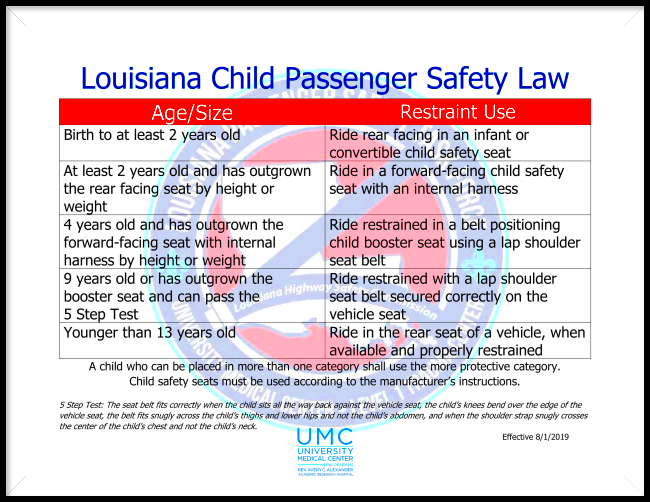Car Seat Laws in Louisiana Explained
Keeping your child safe during car trips is really important in Louisiana. The car seat laws are in place to keep young passengers secure by providing guidelines for using car seats properly. As a parent it can be overwhelming to deal with these rules but it’s essential to grasp them to protect your child while driving. Let’s take a look at the details of these laws so you can hit the road with peace of mind knowing that you’re following the rules and keeping your kids safe.
Age and Weight Requirements for Car Seats
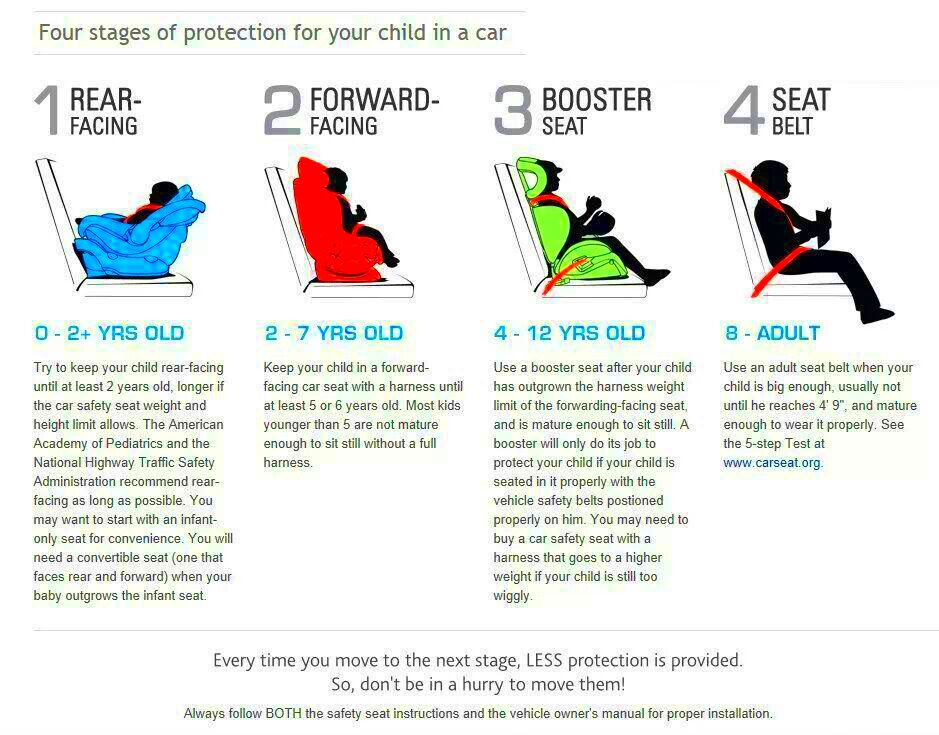
In Louisiana car seat regulations are determined by a childs age and weight to ensure optimal safety during their development. Heres a summary of the key points you should be aware of.
- Infants (Birth to 1 Year): Infants must be secured in a rear-facing car seat. These seats provide the best support for an infant’s head, neck, and spine in the event of a crash.
- Toddlers (1 to 4 Years): After reaching the age of one and weighing at least 22 pounds, your child should transition to a forward-facing car seat with a harness. Keep them in this seat until they outgrow the weight limit.
- Preschoolers (4 to 7 Years): Children should use a booster seat until they are 4 feet 9 inches tall or reach the maximum weight limit of their booster seat. The booster seat ensures that the car’s seat belt fits properly across their lap and shoulder.
- Older Children (7 Years and Up): Once they have outgrown their booster seat, children should use a seat belt until they are tall enough for the seat belt to fit correctly—typically around 8 to 12 years old.
It’s crucial to adhere to these rules as much as you can. Real life stories often reveal that making the switch too soon can jeopardize safety. Keep in mind that each child develops at their own pace so make sure your car seat is secure and offers adequate protection.
Types of Car Seats and Their Uses
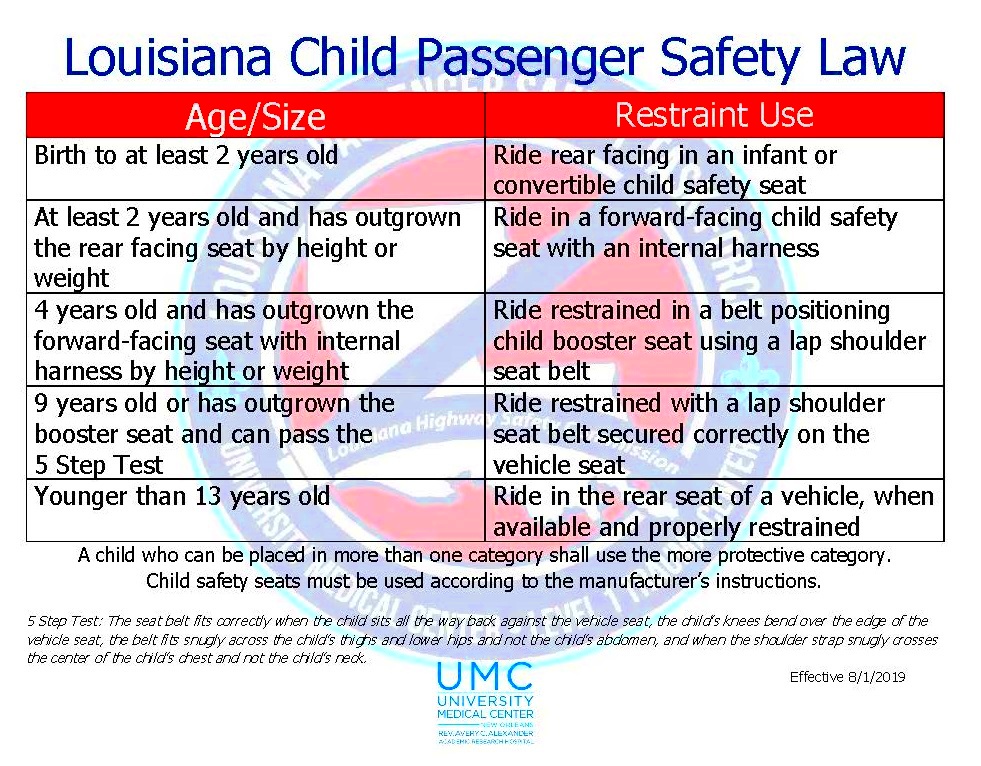
Picking the car seat can feel like a lot, but knowing the different options out there can help simplify the process. Here’s an overview of the various car seat types and their purposes.
| Type of Car Seat | Recommended Age/Weight | Features |
|---|---|---|
| Rear-Facing Car Seat | Birth to 2 Years (or until they reach the seat’s weight/height limits) | Supports head, neck, and spine; reduces risk of injury during a crash |
| Forward-Facing Car Seat | 2 to 4 Years (or until they reach the seat’s weight/height limits) | Five-point harness; provides protection for upper body in a crash |
| Booster Seat | 4 to 7 Years (until seat belt fits properly) | Elevates child so seat belt fits correctly across their lap and shoulder |
| Convertible Car Seat | Infant to Toddler | Can be used as rear-facing or forward-facing; adjustable to grow with the child |
| All-in-One Car Seat | Infant to Booster | Can be used as rear-facing, forward-facing, and booster seat; designed to last through all stages |
When it comes to selecting a car seat, it often boils down to individual preferences and your childs unique requirements. For instance, many parents opt for car seats due to their adaptability and extended usability. No matter which seat you go for, make sure it complies with safety regulations and is installed to provide optimal protection for your little one.
When to Transition to a Booster Seat
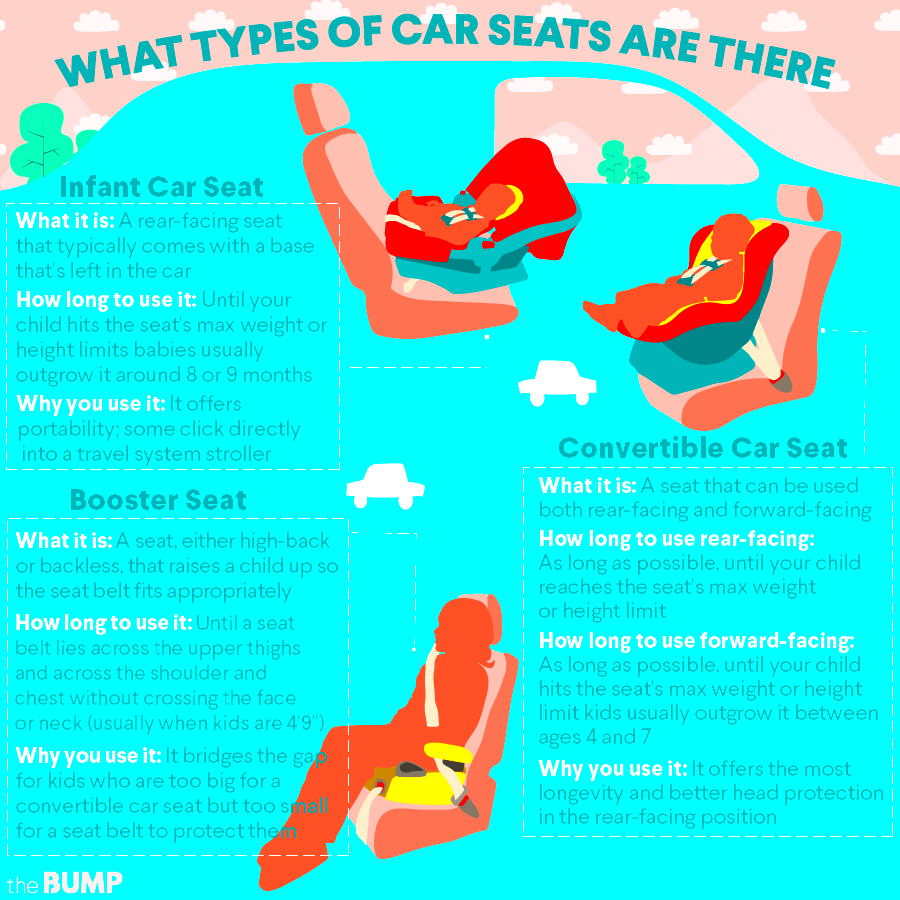
Moving from a car seat to a booster seat is an important step in a childs journey. I recall the moment we switched our daughters seat she was thrilled to settle into her new spot, thinking of herself as a grown up. Nevertheless it’s crucial to make this change at the time to keep your little one safe.
Here’s a helpful guide to assist you in determining the right moment to transition to a booster seat.
- Age and Weight: Generally, children should use a booster seat from around 4 years old until they are 8 to 12 years old. They should weigh between 40 and 100 pounds, although this can vary by booster seat model.
- Height and Fit: Your child should be at least 4 feet 9 inches tall before transitioning out of a booster seat. The seat belt must fit properly over their shoulder and lap without the booster seat, ensuring the best protection.
- Growth Milestones: If your child’s shoulders are above the top harness slots of their forward-facing car seat or if they have outgrown the weight limits, it’s time for a booster seat. Ensure the booster seat raises them so that the vehicle’s seat belt fits correctly.
Every kid is one of a kind and the timing for this change can vary. Its important to keep an eye on how your child is developing and whether their car seat still suits them. Transitioning too early or too late could jeopardize their safety, so make sure to carefully consider what works best for them.
Legal Requirements for Using Car Seats
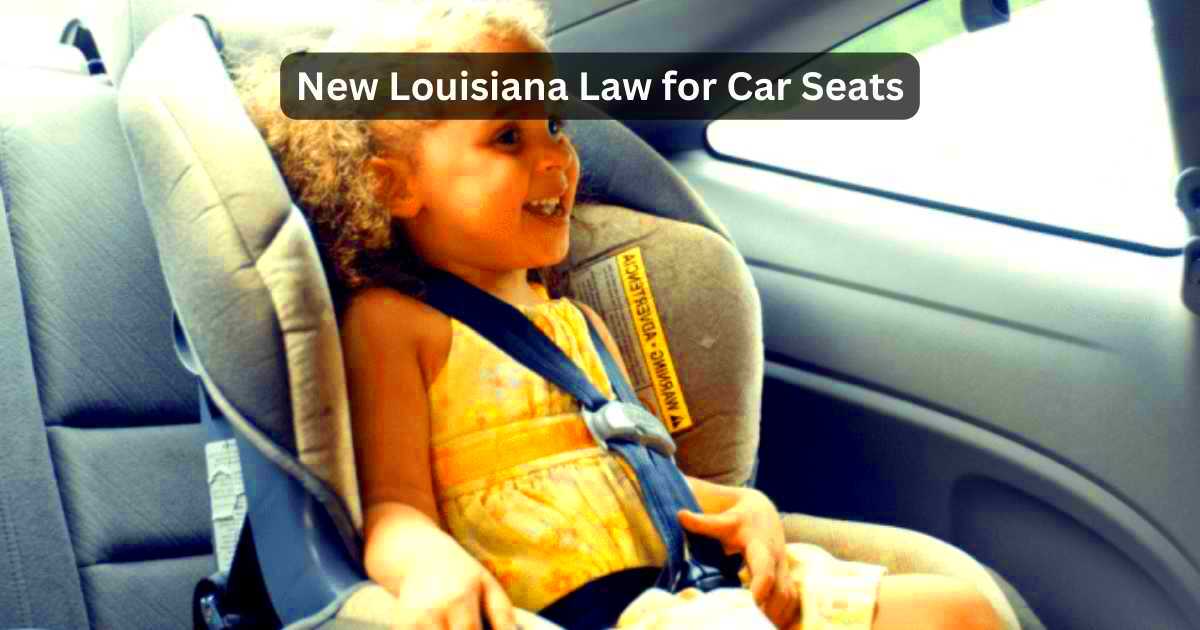
It’s vital to grasp the legal obligations regarding car seats in Louisiana to prioritize safety and adhere to regulations. I remember experiencing a blend of confusion and reassurance when discovering the details. Allow me to outline the law’s requirements for you.
- Rear-Facing Seats: Louisiana law requires that children under the age of 2 must be in a rear-facing car seat. This rule helps protect their delicate head, neck, and spine in case of an accident.
- Forward-Facing Seats: Once your child is 2 years old and meets the weight and height requirements of their rear-facing seat, they can transition to a forward-facing car seat with a harness. This seat must be used until they outgrow it.
- Booster Seats: Children must use a booster seat until they are 4 feet 9 inches tall and are between 4 and 7 years old. The booster seat ensures the vehicle’s seat belt fits properly over the child’s lap and shoulder.
- Seat Belts: Once your child outgrows the booster seat, they should use a seat belt properly fitted across their lap and shoulder. Louisiana requires children under 13 to sit in the back seat when available.
These rules are in place to protect kids and make sure drivers stick to the law. If you dont follow them you could face penalties and most importantly endanger your childs safety. Its crucial to verify that your car seat is properly installed and meets the requirements.
Common Mistakes to Avoid
When it comes to keeping kids safe in car seats getting it wrong can have serious consequences. Ive witnessed some friends face challenges when installing car seats and it really drives home how simple it is to slip up. Here are some common missteps to steer clear of.
- Incorrect Installation: Many parents struggle with installing car seats properly. Always follow the manufacturer’s instructions and, if possible, get a certified technician to check the installation. A car seat that’s not securely installed can be less effective in a crash.
- Using an Outgrown Seat: If your child has outgrown their car seat based on weight, height, or age limits, it’s time for a new one. Continuing to use an outgrown seat can be dangerous and might not offer adequate protection.
- Incorrect Harness Use: The harness should be snug against your child’s chest. Straps should be at or below the child’s shoulders for rear-facing seats and at or above for forward-facing seats. Loose harnesses can increase the risk of injury.
- Improper Transitioning: Moving your child to a booster seat or seat belt too early can compromise their safety. Ensure they meet all the requirements for transitioning to the next stage before making a change.
- Neglecting Car Seat Maintenance: Regularly check your car seat for wear and tear and make sure it hasn’t been involved in an accident. Car seats should be replaced after a severe crash or if they are expired.
With some awareness and attentiveness these errors can be easily prevented. It’s essential to ensure that your child’s car seat is properly used and adheres to all safety regulations to ensure their well being. As a parent being knowledgeable and proactive about these aspects can significantly impact your child’s safety while traveling.
Penalties for Not Following Car Seat Laws
Ignoring car seat laws can have repercussions, both legally and when it comes to safety. I recall a friend who received a fine for not securing their child in a car seat. It served as a reminder not just for them but for many of us about the significance of following these rules.
In Louisiana failing to follow car seat laws can result in penalties such as
- Fines: Failing to use the correct car seat for your child’s age and size can result in a fine. The amount can vary, but it is often significant enough to make you think twice about compliance.
- Points on Your License: In some cases, traffic violations related to improper car seat use can add points to your driving record. Accumulating too many points can lead to increased insurance premiums or even a suspended license.
- Increased Insurance Rates: Being cited for not using a proper car seat may also impact your car insurance rates. Insurance companies might view this as a lapse in responsible behavior, leading to higher costs for coverage.
- Legal Consequences: If a violation leads to an accident, you could face more severe legal repercussions, especially if it is determined that the improper car seat use contributed to the child’s injury.
These penalties go beyond mere fines; they serve as reminders of the significance of safeguarding our children. The expense of adhering to the rules is insignificant when weighed against the potential consequences of not doing so, both in terms of finances and emotions. Making sure that your car seat complies with all legal standards is a price worth paying for reassurance and the well being of your child.
How to Ensure Your Car Seat is Properly Installed
Getting a car seat installed can be a bit tricky but ensuring its proper installation is vital for your childs safety. I recall facing challenges when trying to set up our car seat correctly. It took me a few attempts and assistance from a nearby safety professional to nail it down. Here are some tips to ensure your car seat is secured, properly.
- Read the Manual: Always start by reading both the car seat manual and your vehicle’s manual. Understanding the specific requirements and installation procedures for your car seat and vehicle is essential.
- Check the Angle: Ensure the car seat is at the correct angle. For rear-facing seats, most have an angle indicator to help you position it correctly. A seat that’s too upright or too reclined can affect safety.
- Secure the Seat: Use either the seat belt or LATCH (Lower Anchors and Tethers for Children) system to secure the car seat. The seat should not move more than an inch side to side or front to back when pulled at the base.
- Adjust the Harness: For rear-facing seats, the harness should be at or below your child’s shoulders. For forward-facing seats, it should be at or above their shoulders. The harness should be snug but not too tight—check by trying to pinch the straps at the shoulder.
- Get a Professional Check: If you’re unsure about your installation, many communities offer free car seat inspections by certified technicians. It’s worth the time to get a professional’s input to ensure everything is done right.
Getting a car seat set up right may take some practice, but its crucial for keeping your little one safe. By sticking to these guidelines and reaching out for assistance when necessary you can make sure your childs car seat is securely installed and offers optimal protection.
FAQs About Car Seat Laws in Louisiana
Understanding car seat regulations can bring up a lot of queries. Drawing from experiences and common worries here are responses to some questions that often come up.
- What car seat should I use for my newborn? For newborns, a rear-facing car seat is essential. It provides the best protection for their fragile neck and spine. Make sure the seat is installed at the correct angle and is suitable for your baby’s weight and height.
- When can I switch my child to a forward-facing car seat? You can switch to a forward-facing car seat when your child is at least 2 years old and meets the weight and height limits of the rear-facing seat. However, keeping them rear-facing as long as possible is recommended for added safety.
- How long should my child stay in a booster seat? Children should stay in a booster seat until they are about 4 feet 9 inches tall and between 8 and 12 years old. The booster seat helps the seat belt fit correctly across their lap and shoulder.
- What should I do if my car seat is expired? Car seats have expiration dates, usually marked on a label. If your car seat is expired, it’s important to replace it. An expired car seat may not offer adequate protection in an accident.
- Can I use a second-hand car seat? It’s not recommended to use second-hand car seats unless you are certain of their history, including whether they have been in a crash or have missing parts. Always check for recalls and ensure the seat is still in good condition.
These responses tackle worries and offer insights into the rules and recommendations for using car seats. Staying informed about these matters will not only ensure your child’s safety but also help you steer clear of any potential complications related to car seat regulations.
Conclusion
In conclusion being aware of and adhering to car seat laws in Louisiana goes beyond just a legal obligation; it’s about safeguarding your child. From selecting the car seat to installing it correctly and navigating through the various stages every aspect is vital for keeping your little one safe on the road. I’ve witnessed how easy it is to overlook these details amidst the busyness of life but making choices can greatly influence your child’s well being. Remember that the effort you invest in using and maintaining car seats pays off, in peace of mind and most importantly, in the protection of your loved ones. So let’s remain watchful and prioritize our children’s safety by following these essential guidelines. Wishing you travels!
